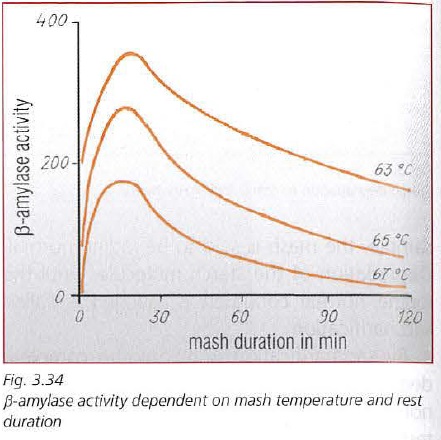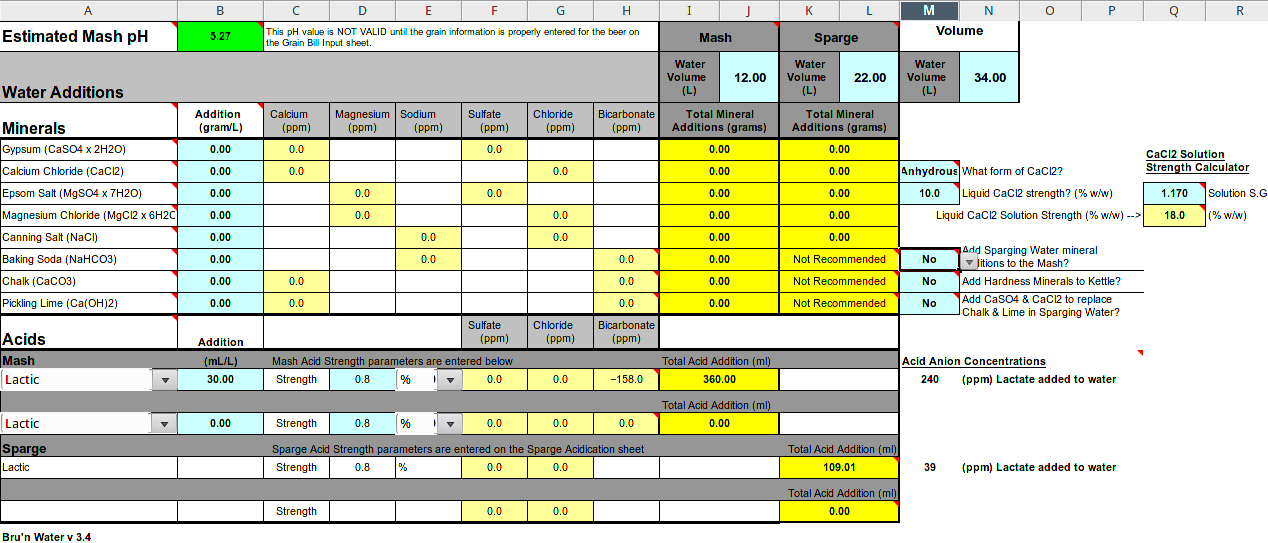Interesting, I just wish I knew whether to believe Brauwelt's or Kunze's data. Kunze's chart implies a beta-amylase half life on the order of 60 minutes at 63°. Anyone got a way to resolve this huge discrepancy?
Brew on

Have you guys ever tried the 50/50 pseudo decoction mash that is advocated?
A more effective strategy for solving the
problem would be a mashing process ap-
proximating decoction during which the
kettle mash is not actually boiled (fig. 3).
After mashing-in approx. 50 percent of
the grist at 62 °C directly into the kettle,
it is heated to 72 °C and allowed to dextri-
nate, meaning that many α-glucan frag-
ments with reactive ends are formed. The
depolymerization of the starch is already
underway, which impedes subsequent ret-
rogradation, the reformation of quasi-crys-
talline structures when the starch cools to
below the gelatinization temperature. The
second half of the grist is mashed-in at
52 °C in the mash tun in order to preserve
the β-amylase. After dextrination in the
kettle, the two mashes are mixed together
in the mash tun to reach a temperature of
62 °C. The intense maltose formation in
the pre-digested substrate increases the
final attenuation to the desired level. The
procedure then continues according to the
high-short mashing process. The amount
of time required for the whole procedure
is no longer than the previously described
infusion process.
Sounds really interesting idea intended to preserve Beta amalyse for as long as is necessary and does not require boiling. Nor is it time consuming. I like this idea very much.









































![Craft A Brew - Safale S-04 Dry Yeast - Fermentis - English Ale Dry Yeast - For English and American Ales and Hard Apple Ciders - Ingredients for Home Brewing - Beer Making Supplies - [1 Pack]](https://m.media-amazon.com/images/I/41fVGNh6JfL._SL500_.jpg)




















